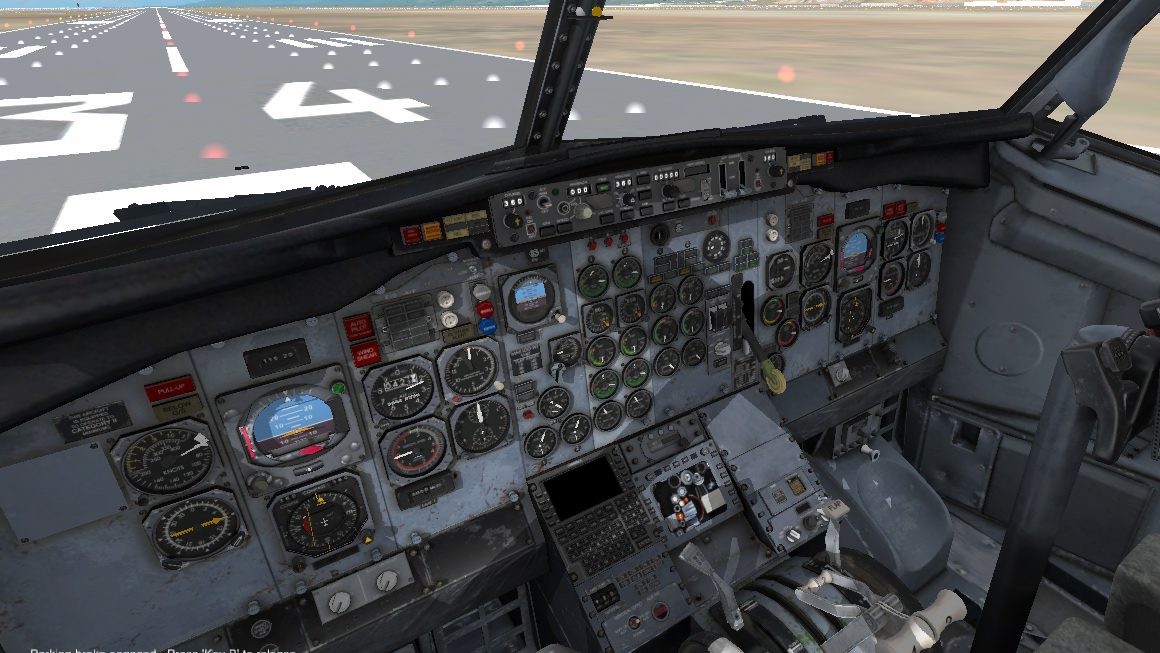FlyInside FSX, the crowdfunded VR plugin for Microsoft Flight Simulator X (2006), was built well before first-party VR motion controllers existed, developed back in the DK2-era of 2015 as an ad hoc way of jumping into an already highly-detailed flight sim. Now, the creators of FlyInside FSX have released their own dedicated flight simulator in beta, dubbed FlyInside Flight Simulator, that’s built from the ground-up for VR.
FlyInside Flight Simulator isn’t hitting Steam or the Oculus Store yet though, as the company is launching beta access for both their free trial version and a paid ‘pro version’ first through their website starting today to get the valuable feedback and start building a community around the fledgling flight sim.
I’ve had some experience with flight sims in my time, and although I wouldn’t consider myself an enthusiast, with a little gumption (and handy instructions) I can usually figure out my way around a plane. FlyInside has a few short tutorials with voice overs and handy indicators to tell you locations of major controls and instruments so you’re not sitting parked on the runway without a clue, although don’t expect a full flight school just yet, as they only cover the basics. You can also set the flight difficulty to easy, medium and realistic, which determines how much power you have, and how responsive the controls are.
That said, like all flight sims, FlyInside has a definite learning curve, as it seeks to accurately simulate everything from Cessna prop planes all the way up to Chinook helicopters, each with their own control intricacies that hardcore flight sim proponents love to dig into. What’s different about FlyInside though is both Rift and Vive users can use their respective motion controllers to manipulate levers, buttons, and requisite knobs. Leap Motion is also supported too, letting you manipulate controls in the cockpit with your own two hands.
At the time of this writing, FlyInside boasts over 15 major plane and helicopter types (with more subtypes) that include all of the realistic instruments you’d expect.

FlyInside also comes replete with configurable time, weather, and the trial version ships with around 40,000 square miles of Utah and Nevada. The full version will come with the full continental Unites States, meaning you can fly from Florida to Oregon in VR.
It’s still early days for FlyInside. While I had no trouble hitting 90 fps, one of the biggest pain points currently in FlyInside’s early open beta are how you manipulate levers, buttons and menus with motion controllers. While there is haptic feedback, I found my natural inclination to grab levers to be a bit of a let down. The current VR controller implementation makes manually adjusting controls sort of a guessing game that can be frustrating at times, requiring a delicate touch with a single extended finger to manipulate most buttons; I never really got hang of actually using motion controllers to manipulate important controls like the yoke or the thrusters, but they are entirely serviceable provided you make sure your controllers aren’t occluded by your desk.
If you have a HOTAS setup (and I imagine you do if you’re a flight sim enthusiast), it’s advised to break out the keybinding menu and forgo motion controllers for a majority of flight controls at this early stage considering how floaty they feel, despite some haptic feedback to let you know when you’re touching a button. There’s also keyboard and mouse support, the latter of which I found useful for re-positioning menus, which you can put around the cockpit at any position you find comfortable.
In the end though, FlyInside brings nearly everything to the table that VR flight sim enthusiasts are sure to enjoy, including a multiplayer function so you can fly around with your friends. With a little more love in the VR controls department, it’s truly poised to give other VR-compatible flight sims like X-Plane 11 a run for their money.
The studio hasn’t set a definite launch window for Steam and Oculus Store yet, although they’re currently pricing the ‘pro version’ to appeal to its original Kickstarter backers at $20, and existing customers at $25. Brand new customers can expect to pay $32 for the full game.
Future development items include:
- Expanded Scenery – We have a Europe scenery under development, and will target global scenery after
- Improved Scenery – Most of our development so far has been on the simulator engine itself. It can push huge amounts of auto-gen, but is mostly drawing “developer art.” Now that the first version is out the door, we’ll be working with artists to enhance the scenery content itself.
- Offline ATC – We want to build a living world. This includes intelligent air traffic, and an ATC system you can interact with.
- Additional Aircraft – We’re working with multiple aircraft developers to port additional aircraft to FlyInside Flight Simulator. Some will be added to the base simulator, as free updates.
- Realistic G1000, G530 style avionics – Right now our digital avionics are fairly basic displays. The goal is to fill them in and create units worth practicing navigation with.
- Much much more – There are few projects more ambituous than a flight simulator. We plan to add features and fixes for years to come.






